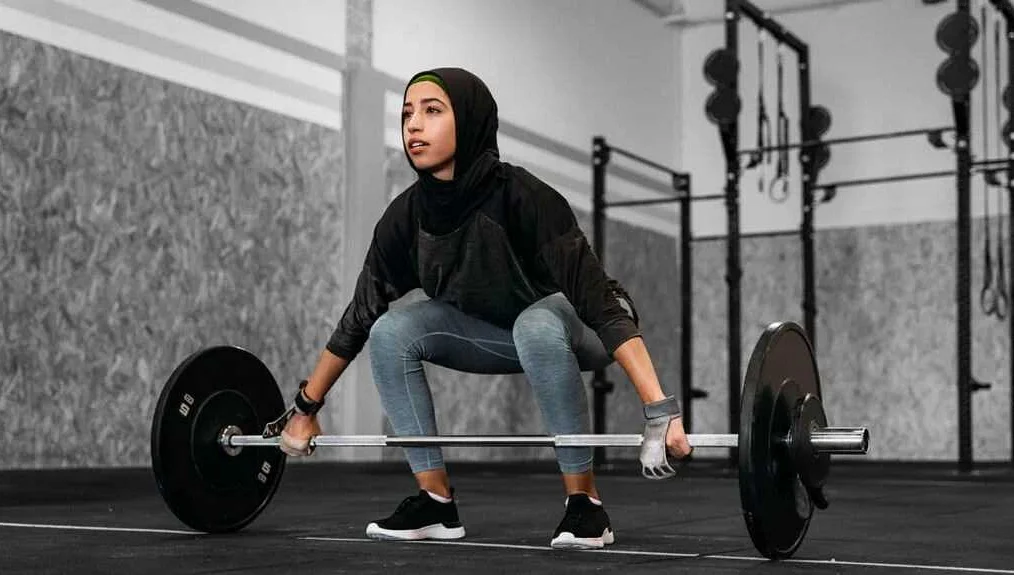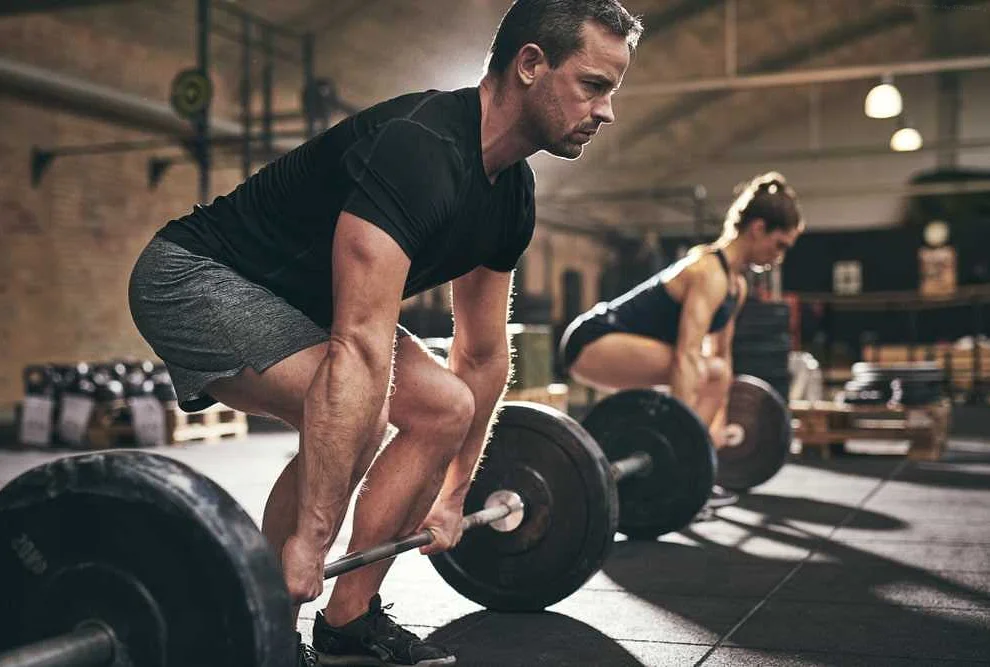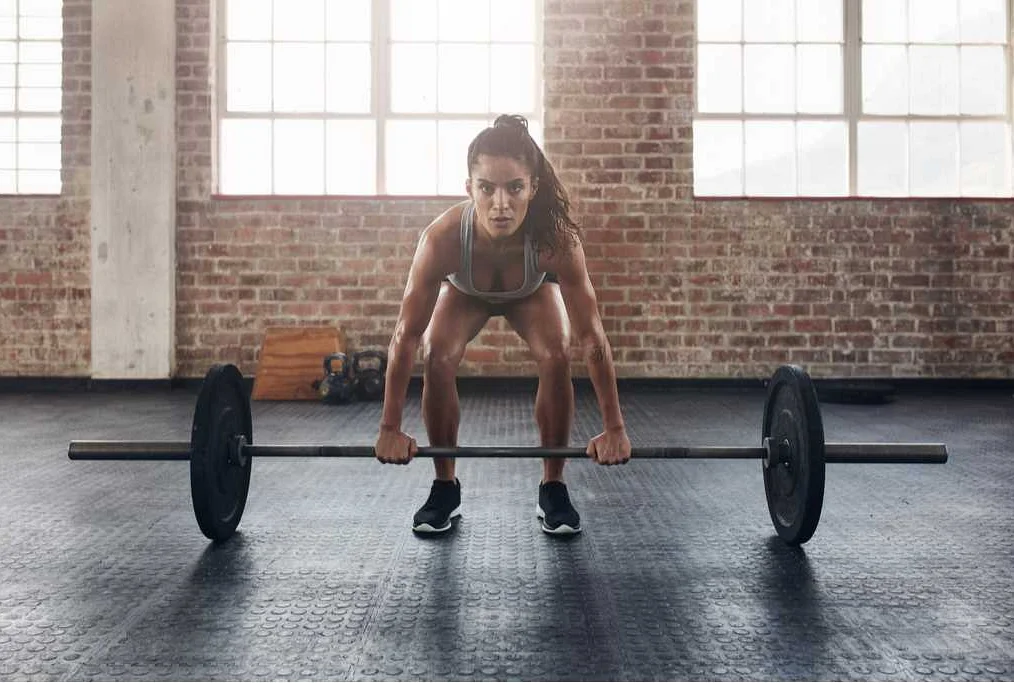Performing Deadlifts: Benefits, Possible Harm, Correct Technique
Содержимое
Learn about the benefits of deadlifts, the potential risks associated with performing them incorrectly, and how to master the correct technique for optimal results.
The deadlift is a foundational exercise that targets multiple muscle groups and is often considered the king of all strength exercises. It is a compound movement that primarily works the muscles in the lower body, including the glutes, hamstrings, and quadriceps. However, it also engages the upper body muscles, such as the back, shoulders, and arms, making it a highly effective full-body exercise.
One of the main benefits of deadlifts is the development of raw strength and power. It is a functional movement that mimics everyday activities like lifting heavy objects off the ground, improving overall strength and lifting mechanics. Deadlifts also enhance muscular endurance, grip strength, and core stability, as the exercise requires engagement of the abdominal muscles to maintain proper posture and spinal alignment throughout the lift.
While deadlifts offer numerous benefits, it is crucial to approach them with caution to reduce the risk of injury. Proper technique is essential to ensure safety and maximize results. The correct deadlift technique involves maintaining a neutral spine, engaging the glutes and hamstrings, and using the legs to lift the weight rather than relying solely on the back. It is essential to start with light weights and gradually increase the load as strength and technique improve.
Boost Your Strength and Muscle Mass with Deadlifts

Deadlifts are one of the most effective exercises for improving both strength and muscle mass. This compound exercise targets multiple muscle groups, including your glutes, hamstrings, quads, lower back, and core.
By incorporating deadlifts into your workout routine, you can experience a significant increase in overall strength. Deadlifts engage the muscles in your lower body, as well as your back and core, making it a full-body exercise that can help you build functional strength.
Deadlifts also have a direct impact on muscle mass. This exercise places a high demand on your muscles, which stimulates muscle growth and hypertrophy. By consistently performing deadlifts, you can increase the size and strength of your muscles.
Another benefit of deadlifts is their ability to improve your grip strength. Since deadlifts require you to hold onto a heavy barbell, your forearm muscles and grip strength are heavily engaged. This can have a positive impact on your performance in other exercises, such as pull-ups and rows.
However, it’s important to perform deadlifts with proper form to avoid injury. Always start with light weights and focus on mastering your technique before gradually increasing the load. Keep your back straight, engage your core, and use your legs to lift the weight, rather than relying solely on your back.
In summary, deadlifts are a powerful exercise that can help you boost your strength and muscle mass. Incorporate them into your workout routine and reap the benefits of improved overall strength, increased muscle size, and enhanced grip strength.
Burn Fat and Improve Body Composition

Deadlifts are not only a great exercise for building strength and muscle, but they can also be an effective tool for burning fat and improving body composition. Here are a few reasons why incorporating deadlifts into your workout routine can help you achieve your fat loss and body composition goals:
- Full-body workout: Deadlifts engage multiple muscle groups, including your legs, back, and core. This means that when you perform deadlifts, you are working several large muscle groups at once, which can help you burn more calories and fat.
- Increase your metabolism: Deadlifts are a compound exercise that requires a lot of effort and energy. Performing deadlifts can help increase your metabolic rate, which is the number of calories your body burns at rest. By boosting your metabolism, you can burn more calories throughout the day and improve your body composition.
- Build muscle: Deadlifts are known for their ability to build strength and muscle. When you have more muscle mass, your body burns more calories at rest, leading to a higher resting metabolic rate. This can help you burn fat and improve your body composition.
- Improve functional strength: Deadlifts are a functional exercise, meaning they mimic movements you use in everyday life, such as picking up objects from the ground. By improving your strength and technique with deadlifts, you can enhance your overall functional strength and make daily tasks easier.
- Increase cardiovascular endurance: Deadlifts can also be a challenging cardiovascular exercise, especially when performed with heavy weights and high intensity. By incorporating deadlifts into your workout routine, you can improve your cardiovascular endurance, which can help you burn more calories and fat during cardio-focused workouts.
It’s important to note that while deadlifts can be beneficial for burning fat and improving body composition, they should be performed with proper form and technique to minimize the risk of injury. If you’re new to deadlifts or unsure about proper technique, it’s recommended to seek guidance from a qualified fitness professional.
In conclusion, incorporating deadlifts into your workout routine can be a valuable tool for burning fat, improving body composition, and achieving your fitness goals. Remember to always prioritize safety and proper technique to maximize the benefits of this exercise.
Enhance Your Functional Fitness and Performance

Deadlifts are not just about building muscle and strength; they also have a significant impact on your functional fitness and overall performance. Incorporating deadlifts into your workout routine can offer a wide range of benefits that can enhance your everyday life and athletic performance.
One of the key benefits of deadlifts is their ability to improve your functional fitness. Functional fitness refers to the ability to perform everyday activities efficiently and safely. Deadlifts engage multiple muscle groups and joints, making them a highly functional exercise.
By performing deadlifts, you strengthen your core, back, legs, and arms, which are crucial for everyday movements such as lifting heavy objects, bending, and squatting. This increased strength can help reduce the risk of injury and improve your overall quality of life.
In addition to functional fitness, deadlifts can also enhance your athletic performance. Deadlifts target the posterior chain, which includes the muscles in your back, glutes, and hamstrings. A strong posterior chain is essential for explosive movements like jumping, sprinting, and throwing.
By incorporating deadlifts into your training program, you can strengthen these muscles and improve your power, speed, and agility. This can translate into better performance in sports like football, basketball, track and field, and many others.
Furthermore, deadlifts also have a positive impact on your overall body mechanics and posture. They promote proper alignment of the spine and strengthen the muscles that support it. This can help alleviate back pain and improve your posture, both of which are crucial for maintaining a healthy and pain-free body.
When performing deadlifts, it is essential to focus on maintaining proper form and technique to avoid injury. Starting with lighter weights and gradually increasing the load can help you build a solid foundation and prevent straining your muscles.
| Improved functional fitness |
| Enhanced athletic performance |
| Strengthened posterior chain |
| Improved body mechanics and posture |
In conclusion, incorporating deadlifts into your workout routine can have a significant impact on your functional fitness and overall performance. By targeting multiple muscle groups and joints, deadlifts help improve functional movements, enhance athletic performance, and promote proper body mechanics and posture. Remember to always prioritize proper form and technique to reap the full benefits of this powerful exercise.
Reduce the Risk of Injury through Proper Deadlift Technique
Performing deadlifts with proper technique is crucial in order to reduce the risk of injury. The deadlift is a compound exercise that engages multiple muscle groups, including the legs, hips, back, and core. While deadlifts can be highly beneficial for building strength and muscle, they can also pose a risk if not executed correctly.
Here are some key tips to help you reduce the risk of injury when performing deadlifts:
1. Maintain a neutral spine: Start with your feet hip-width apart and grip the barbell just outside your legs. Keep your back straight and engage your core, avoiding any rounding or excessive arching of the spine throughout the movement. This helps distribute the load evenly and protects your lower back from injury.
2. Engage your glutes and hamstrings: As you lift the barbell, focus on pushing through your heels and driving your hips forward. This helps activate your glutes and hamstrings, which are essential for proper deadlift form. Avoid relying solely on your lower back to lift the weight, as this can increase the risk of strains or sprains.
3. Use proper grip: The most common grip used in deadlifts is the mixed grip, where one hand is positioned with an underhand grip and the other hand with an overhand grip. This grip helps in maintaining a secure hold on the barbell and prevents it from rolling out of your hands. Alternatively, you can also use a double overhand grip or straps if needed.
4. Keep the bar close to your body: Throughout the movement, ensure that the barbell stays in contact with your legs. This helps maintain proper balance and stability, reducing the strain on your lower back. Avoid letting the barbell drift away from your body, as this can put additional stress on your spine.
5. Warm up properly: Before attempting heavy deadlifts, it’s essential to warm up properly. Incorporate dynamic stretches and exercises that target the muscles involved in the deadlift, such as hip hinges, bodyweight squats, and glute activation exercises. This helps prepare your body for the movement and reduces the risk of muscle strains or tears.
6. Progress gradually: It’s important to gradually increase the weight you lift in deadlifts. Starting with lighter weights allows your body to adapt and build proper strength. Rushing into heavy weights without proper form and strength can lead to injuries. Focus on mastering the technique and gradually increase the weight over time.
Remember, always consult a qualified fitness professional if you’re unsure about your deadlift technique. They can provide guidance and help you perform the exercise safely and effectively.